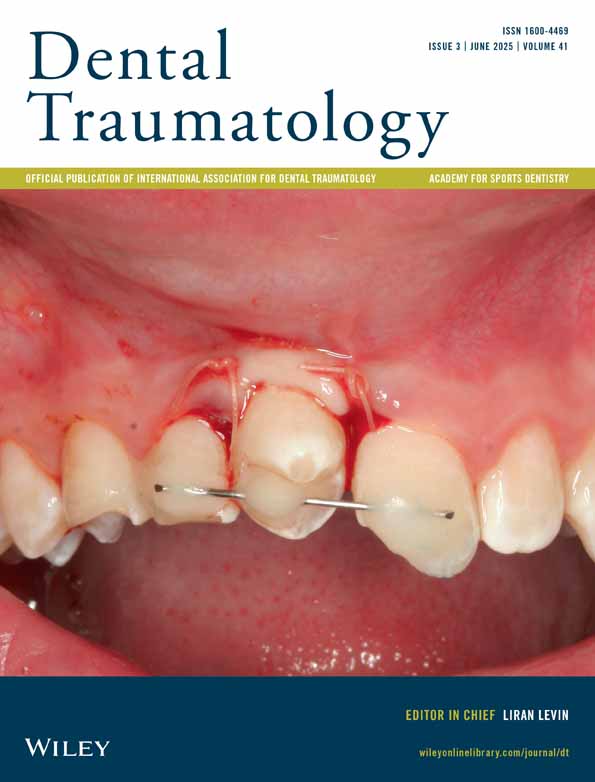Evaluation of Long-Term Clinical and Radiographic Prognosis of Avulsed Teeth: A Retrospective Study
Funding: The authors received no specific funding for this work.
ABSTRACT
Background/Aim
Avulsion injuries have an uncertain prognosis. This study aims to evaluate periodontal ligament healing patterns and factors affecting the survival of replanted avulsed teeth.
Materials and Methods
In this retrospective study, data from 204 avulsed teeth in 143 children (mean age: 9.6 ± 2 years) who sustained avulsion injuries were reviewed. Primary teeth, non-replanted permanent teeth, and cases with follow-up shorter than 60 days were excluded. Data analysis included 60 replanted permanent teeth from 41 patients (18 girls and 23 boys), with a follow-up period ranging from 2 to 147 months. Collected data covered age, gender, extra-alveolar storage time, root development stage, and periodontal ligament healing patterns. Statistical analysis was performed on the data.
Results
Avulsion injuries predominantly occurred during outdoor activities (n = 22, 59.5%), followed by school (n = 10, 27%) and home (n = 5, 13.5%). The main causes were falls (n = 20, 50%), bicycle accidents (n = 6, 15%), sports injuries (n = 5, 12.5%), traffic accidents (n = 2, 5%), and violence (n = 1, 2.5%). Among replanted teeth, 51.7% were immature. Treatments included root canal therapy (n = 30, 50%), apexification (n = 12, 20%), and regeneration (n = 2, 3.3%), while 16 teeth received no treatment. Inflammatory resorption was not observed in teeth replanted within 1 h of injury (8.4%). Functional healing/ankylosis was observed in 14 (23.3%) of the replanted teeth, replacement resorption in 40 (66.7%), and inflammatory resorption in 6 (10%). Replacement resorption affected 66.7% of the replanted teeth, with 62.5% lost over time. Functional healing/ankylosis was more common in mature teeth, while inflammatory resorption was higher in immature teeth. According to Kaplan–Meier estimated survival curves, the survival rate during the 5-year observation period was 47.5%. Survival times were longer in boys and in mature teeth (p < 0.05).
Conclusions
Gender and root development stages were observed to significantly impact the prognosis of replanted avulsed teeth.
Conflicts of Interest
The authors declare no conflicts of interest.
Open Research
Data Availability Statement
Data can be shared upon request.




